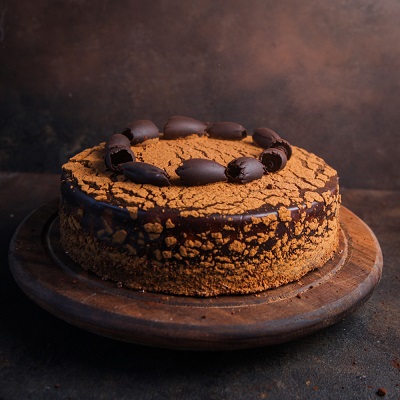 Celiac disease is one of the main reasons for going flourless. It is one of the most common autoimmune diseases. In fact, in the last 50 years, one in 133 people have been diagnosed with the disease. Another reason for eliminating flour in your baking is to reduce carbohydrates. Flour is high in carbs.
Celiac disease is one of the main reasons for going flourless. It is one of the most common autoimmune diseases. In fact, in the last 50 years, one in 133 people have been diagnosed with the disease. Another reason for eliminating flour in your baking is to reduce carbohydrates. Flour is high in carbs.
Removing flour from your diet can improve your health. Going with an all-natural diet like the Paleo Diet, can help free the body from chronic diseases such as:
- Obesity
- Cardiovascular disease (heart disease, stroke, high blood pressure, congestive heart failure, atherosclerosis)
- Type 2 diabetes
- Cancer of many types
- Autoimmune diseases (multiple sclerosis, rheumatoid arthritis, Crohn’s disease, ulcerative colitis, etc.)
- Osteoporosis
- Acne
- Myopia (nearsightedness), macular degeneration, glaucoma
- Varicose veins
- Hemorrhoids
- Diverticulosis, gastric reflux
- Gout
There are many reasons to go flourless. It could be an allergy to wheat or gluten. You may want a more natural diet that reduces many diseases and health problems. Maybe you just want to reduce the amount of carbs you take in every day. Going flourless may be very beneficial and just what the doctor ordered.
Tips for Flourless Baking
Flourless baking can be a real trial-and-error process. Flour, when used in baking, adds body, structure, texture and flavor to baked goods. It often acts as a binder, attaching ingredients together. When you remove the flour, you have to add something else in its place that will perform the same function.
Here are some tips to help achieve better baking results when going flourless:
- To increase the nutrition value, substitute up to 1/4 cup ground flaxseeds plus 1/4 cup water for 1/4 cup flour in a recipe (flax will absorb more moisture).
- To add more moisture to your recipe, add gelatin, extra egg or oil. Honey or rice malt syrup helps retain moisture.
- Substitute brown sugar for white for more moisture.
- To enhance the flavor of flourless foods, add chocolate chips, dried fruits or nuts and double the amount of spices called for.
- For better structure, add dry milk solids or cottage cheese to the recipe. Replace evaporated milk for regular milk.
- Add extra egg or egg whites if your recipe is too crumbly.
- Don’t overbeat since the kneading time is shorter with no gluten to develop.
- You can use ground oats in place of flour, but you need ingredients like banana or eggs to bind the ingredients together.
- Eggs can replace many functions of gluten such as binding enhancing texture setting the structure of the recipe. Two other starch-based products you can use to bind and thicken are guar gum and xanthan gum. They are interchangeable and used in small amounts.
The key to flourless baking is to experiment. You may have to try different ingredients or amounts to get the flavor and texture you want.
Filling the Pantry
Filling your pantry with flourless alternatives is a bit different from a normally stocked baking pantry. Although there are many alternatives to wheat flour, for our purposes, we’re sticking with non-flour ingredients.
- Black or White Beans, Garbanzo beans (drained, rinsed and pureed) when substituting for flour. Use 1 cup of bean puree (about a 15 oz can) instead of 1 cup of flour, when baking.
- Rolled Oats offer a nutty taste and course texture. Oats can be used instead of flour in muffin recipes. Use 1 cup of oats for every 1 cup of all-purpose flour. You may also need to add 1 or 2 teaspoons of baking powder or soda, per cup of oats. Ensure moisture from ingredients like eggs or mashed banana.
- Nuts can be ground and added to baked goods in place of flour.
- Flaxseed is the seeds of the flax plant. They have nutty taste. The whole seeds need to be ground into meal for baking. A simple spice or coffee grinder can do this in seconds.
- Chocolate, Chocolate chips, Cocoa Powder
- Eggs
- Guar gum and xanthan gum are used in gluten-free cooking to bind, thicken and emulsify gluten-free ingredients.
- Corn Meal can be used in pancakes, muffins, cornbread and tortillas.
- Fruit purees such as applesauce and pumpkin
- Seasonings
- Almond meal is ground almonds, good for flour substitute in muffins.
- Peanut butter
- Baking soda
- Baking powder
- Sugar, brown sugar, sugar substitute – if you’re watching your carbs, replace the sugar in these recipes with substitute.
- Molasses, honey
- Unflavored gelatin can be used as a binder, thickener and egg substitute when mixed with water.
- Millet is a seed with a rice-like texture when cooked. It can be used for cereal, a base in stews or for millet cakes.
- Pumpkin seed meal is a flour alternative that adds a nutty flavor.
- Sesame seed meal comes from ground sesame seeds.
- Sunflower seed meal is a flour alternative made from ground sunflower seeds.
- Chia seed meal is made from ground chia seeds. Adjust liquid levels and cooking times when used in baking.
Whatever your reason for going flourless, experimenting and filling your pantry with alternate and substitute ingredients will give you a well-stocked arsenal to begin using flourless recipes.
Flourless Recipes
Here are a few recipes to help you get started baking without wheat flour. Try one or try them all. From Black Bean Brownies to Peanut Butter Oatmeal Cookies, there’s a little something for everyone.
Let’s go…CLICK HERE






